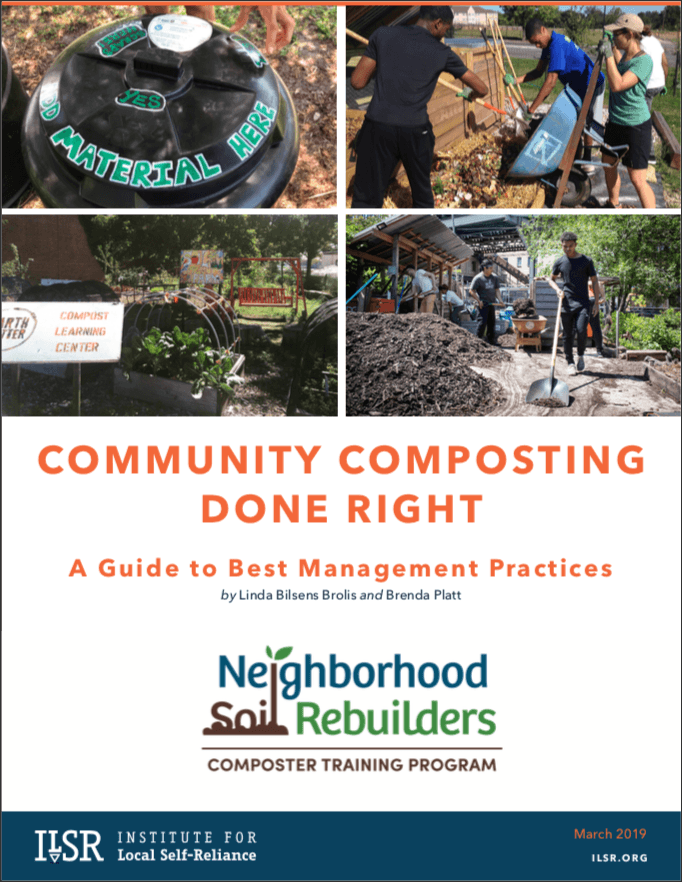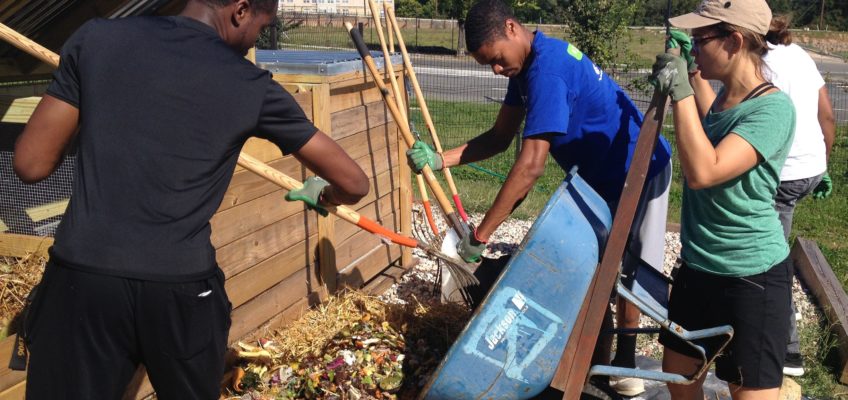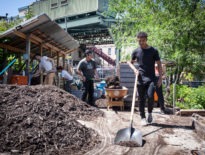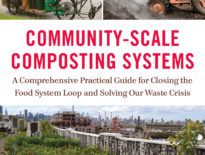
Community composting plays a vital role in promoting composting at all scales. Because operations are often sited locally, they provide unique opportunities to engage, educate, and even employ the communities they serve. This also provides unique challenges as compared to more remote facilities. By supporting well-managed local sites, individuals, elected officials and local planners can take immediate action to reduce waste and improve their soils for climate resilience and local food production. Best management practices (BMPs) are essential to avoiding nuisances and creating a high-quality compost end product.
Community Composting Done Right: A Guide to Best Management Practices is designed to support community-scale composters in successfully managing their composting process and site, with a particular focus on sites accepting food scraps. This report adapts standards of practice from the commercial composting industry for the community scale. Much of the information will apply regardless of the system being used, but it is not intended as a guide to home composting. Co-authors Linda Bilsens Brolis and Brenda Platt hope this report will serve as a resource to both new and existing community composters.
Full Report
4-Page Summary: Community Composting BMPs
Press Release
Webinar
Community Composting Done Right: A Guide to Best Management Practices features custom illustrations done for ILSR by Clarissa Libertelli, which are available for use:
Illustration: The Closed Loop of Community Composting (Color)
Illustration: The Closed Loop of Community Composting (Black and White)
Illustration: Ingredients for Good Compost
Illustration: Yes! No! Materials Accepted (Color)
Illustration: Yes! No! Materials Accepted (Black and White)
Illustration: Example Community Composting Site Layout
Illustration: The Basic Tools of Community Composting (Color)
Illustration: The Basic Tools of Community Composting (Black and White)
Illustration: Common Steps in the Composting Process
Illustration: Cross-section of a Composting Pile
Infographic: Hierarchy to Reduce Food Waste and Build Community
To share these illustrations under creative commons license, free of cost, we request you credit the Institute for Local Self-Reliance by including the following:
Source: L. Bilsens Brolis, B. Platt, Community Composting Done Right: A Guide to Best Management Practices, Institute for Local Self-Reliance, 2019 (www.ilsr.org/composting-bmp-guide). Reprinted with permission.
| Need help designing a composting program or offering composting training?
Our Neighborhood Soil Rebuilders Composter Training Program can be adapted to your community! Contact us at composting4community@ilsr.org |
Community Composting Done Right: A Guide to Best Management Practices is divided into three parts:
Part 1: For New Composters and New Sites summarizes composting basics, site and site plan considerations, and steps to prepare for composting.
Part 2: The Science and Art of Composting provides a deep dive into the composting pile with an overview of important composting science principles.
Part 3: Managing the Composting Process and Your Site reviews monitoring and recordkeeping, curing and using finished compost, best management practices, and health and safety considerations.
We have also compiled several appendices of resource materials to facilitate the adoption of BMPs:
Appendix A – Glossary of Terms
Appendix B – Frequently Asked Questions
Appendix C – Troubleshooting Table
Appendix D – Sample Composting Pile Monitoring Data Sheet
Appendix E – Community Composting in Georgia (This Guide was funded in part by a grant from the U.S. Environmental Protection Agency’s Region 4 office to create a resource for community composters in the state of Georgia. This appendix summarizes specific regulations relevant to community-scale composters in Georgia. For those outside Georgia, Georgia’s rules provide a useful example of how composting at a small scale is regulated.)
The authors thank EPA Region 4, Virginia Cretella Mars Foundation, the 11th Hour Project, the Lisa and Douglas Goldman Fund, and our other donors for their support.





